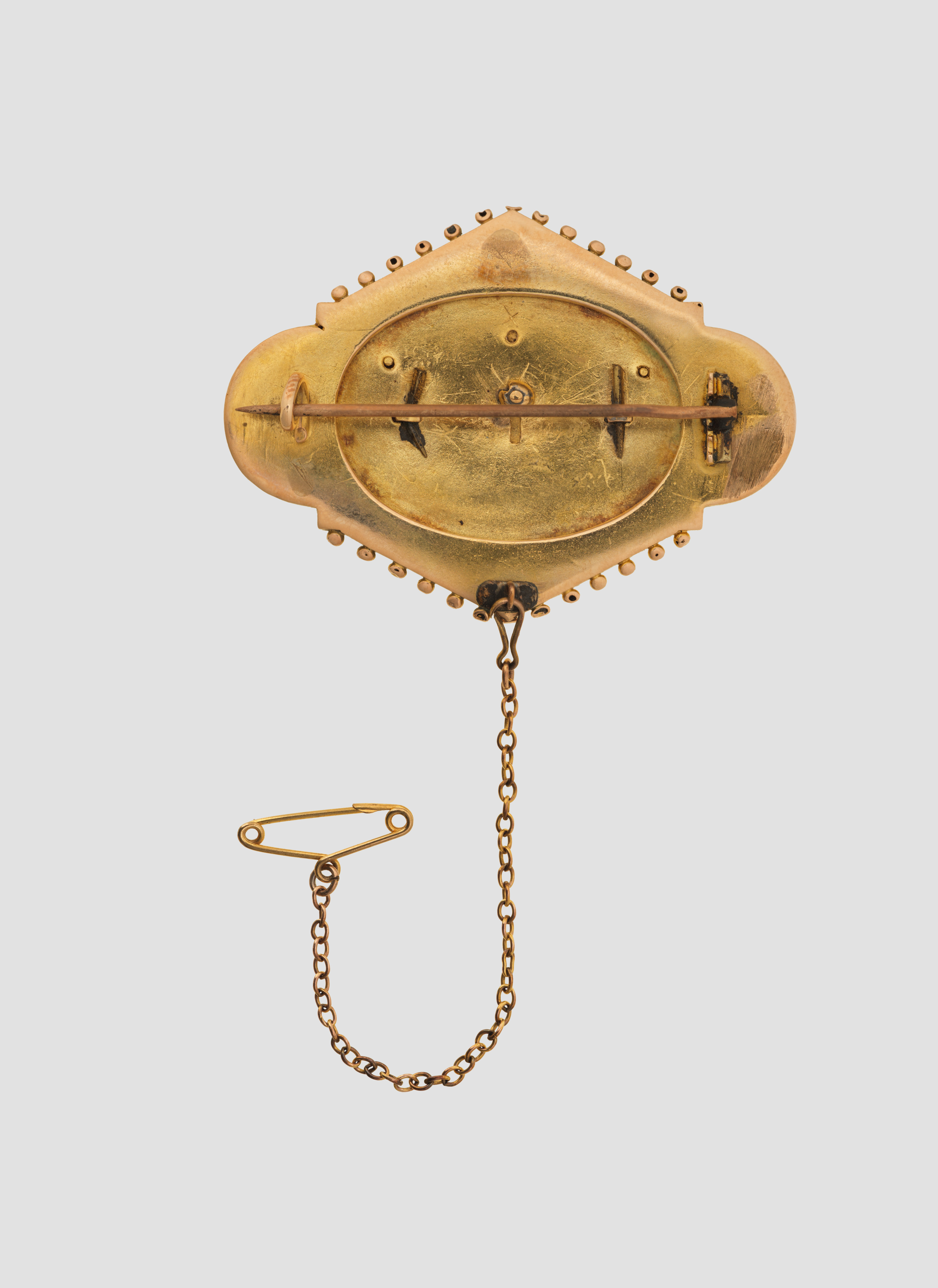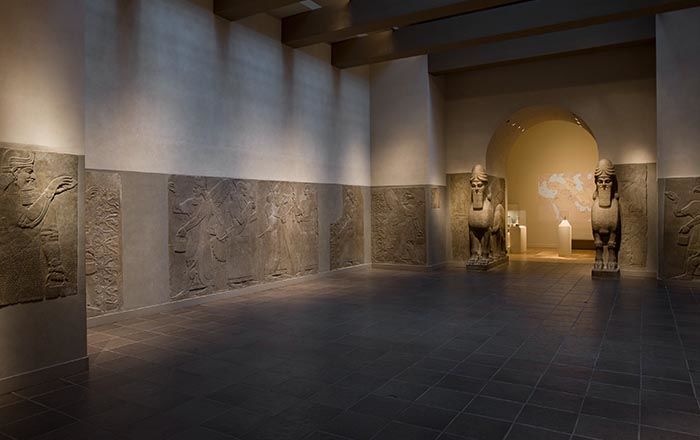Brooch with Assyrian-inspired design
Not on view
Following the excavation of Assyrian palaces in the mid-nineteenth century, ancient Mesopotamian imagery began to be used in European decorative arts, including jewelry and ceramics. Publicity in the form of news coverage and popular books around the excavations, removal of many sculptures from sites in northern Iraq to England and France, and public spectacles such as the reconstructed ‘Nineveh Court’ in the Crystal Palace at Sydenham, London, fostered a fascination with Assyria and Assyrian art among the Victorian public.
The design on the brooch shows a human-headed winged bull and lion and a human figure, all loosely based on Assyrian sculptures. Winged bull and lion figures, based on the colossal guardian sculptures found flanking important gateways in the palaces, became the modern icons of the Assyrian excavations and were the motif most commonly used in Assyrian revival jewelry and decorative arts. The human figure combines a bucket held by some supernatural protective figures in the palace reliefs with the drinking bowl sometimes held by the king in libation scenes. The reverse of the brooch has a compartment for holding miniature portraits or other keepsakes, the glass face of which is now missing.
This image cannot be enlarged, viewed at full screen, or downloaded.
This artwork is meant to be viewed from right to left. Scroll left to view more.



